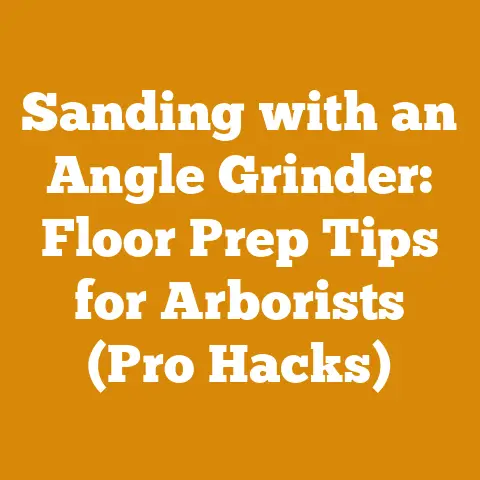Wood Stove in Mobile Home Tips (Efficient Heating & Safety Hacks)
Imagine this: It’s January. Outside, the wind howls, rattling the thin walls of your mobile home. Inside, you’re huddled under layers of blankets, teeth chattering, a desperate attempt to stay warm. The electric bill is astronomical, and you’re dreading the next one. This was me, a few years back. Then, fast forward to today: Same January, same howling wind, but inside, a cozy warmth radiates from a small but mighty wood stove. I’m sitting comfortably in a t-shirt, sipping hot cocoa, and the electric bill? Manageable. The difference? Knowledge, careful planning, and a healthy respect for fire.
Wood Stove in Mobile Home: Efficient Heating & Safety Hacks
Before we dive into the specifics, let’s define some key terms and concepts:
- Wood Stove: A heating appliance designed to burn wood fuel for the purpose of providing warmth.
- Mobile Home (Manufactured Home): A factory-built dwelling designed to be transportable and intended for permanent living.
- Clearances: The minimum distances required between the wood stove, its chimney, and combustible materials (walls, ceilings, furniture).
- Chimney: A vertical structure that vents combustion gases from the wood stove to the outside atmosphere.
- Draft: The flow of air through the wood stove and chimney, crucial for efficient combustion and proper venting.
- Green Wood: Freshly cut wood with a high moisture content (typically above 20%).
- Seasoned Wood: Wood that has been dried for a sufficient period to reduce its moisture content (ideally below 20%).
- BTU (British Thermal Unit): A unit of energy used to measure the heat output of a wood stove.
- UL Listing: A certification from Underwriters Laboratories, indicating that a product has been tested and meets safety standards.
- NFPA (National Fire Protection Association): An organization that develops codes and standards for fire safety.
The stakes are high when dealing with fire. Improper installation or operation can lead to house fires, carbon monoxide poisoning, and other serious hazards. Therefore, it’s crucial to approach this project with meticulous care and attention to detail. This guide is not a substitute for professional advice. Always consult with qualified professionals (wood stove installers, building inspectors) to ensure your installation meets all applicable codes and regulations.
Step 1: Research and Planning
This is arguably the most critical step. Before you even think about buying a wood stove, you need to do your homework.
- Check Local Codes and Regulations: Mobile homes are subject to specific regulations regarding wood stove installations. Contact your local building department to obtain information on permits, required clearances, and other relevant rules. Many jurisdictions follow the HUD (Housing and Urban Development) standards for manufactured homes, which have specific requirements for wood stove installations. Ignoring these regulations is not only illegal but also extremely dangerous.
- Assess Your Heating Needs: Determine the size and layout of your mobile home to estimate the BTU output required from your wood stove. A stove that’s too small won’t adequately heat your space, while one that’s too large will cause overheating and potentially dangerous conditions. Consider the insulation of your mobile home, the climate you live in, and your desired level of comfort. Use online BTU calculators or consult with a wood stove dealer to get an accurate estimate. I learned this the hard way. My first stove was way too big, turning my living room into a sauna.
- Choose the Right Wood Stove: Not all wood stoves are created equal. Look for a stove that is specifically designed and UL-listed for use in mobile homes. These stoves typically have features such as a pedestal base and a spark arrestor to prevent embers from escaping. Consider the stove’s efficiency rating, burn time, and overall construction quality. Cast iron stoves tend to radiate heat more evenly, while steel stoves heat up faster. Pay attention to the firebox size, as this will determine the length of logs you can burn.
- Consider Insurance Implications: Inform your homeowner’s insurance company about your intention to install a wood stove. Some insurers may have specific requirements or may increase your premiums. Failure to disclose this information could void your insurance policy in the event of a fire. I know someone who didn’t disclose their stove, and when a chimney fire occurred, their claim was denied.
- Draft a Detailed Plan: Create a detailed plan that includes the location of the stove, the chimney routing, the type of hearth protection, and all required clearances. This plan will serve as a roadmap for your installation and will be helpful when obtaining permits and consulting with professionals.
Step 2: Selecting the Right Equipment and Materials
Choosing the right equipment and materials is crucial for safety and efficiency.
- Wood Stove: As mentioned earlier, choose a wood stove that is specifically designed and UL-listed for use in mobile homes. Consider the BTU output, efficiency rating, burn time, and construction quality. Look for models with a pedestal base and a spark arrestor. Research different brands and models, read online reviews, and compare prices. I personally prefer stoves with a catalytic combustor, as they burn more cleanly and efficiently, reducing emissions and creosote buildup.
- Chimney: The chimney is a critical component of the wood stove system. Use only UL-listed, double-wall, insulated chimney pipe that is specifically designed for wood stoves. Single-wall pipe is not suitable for use in mobile homes due to the increased risk of fire. The chimney must extend at least 3 feet above the highest point where it passes through the roof and at least 2 feet higher than any part of the building within 10 feet. Ensure the chimney is properly sized for your wood stove; an undersized chimney will restrict airflow, while an oversized chimney will cool the flue gases too quickly, leading to creosote buildup. I strongly recommend hiring a professional chimney sweep to inspect your chimney annually and clean it as needed.
- Hearth Protection: The area beneath and around the wood stove must be protected with a non-combustible hearth pad. This pad should extend at least 16 inches in front of the stove door and 8 inches to the sides and rear. The thickness and type of material required for the hearth pad will depend on the stove’s certification and the floor’s construction. Common materials include concrete, brick, tile, and stone. Make sure the hearth pad is level and securely installed.
- Wall Protection: If the wood stove is located close to combustible walls, you may need to install wall protection. This can be accomplished using various materials, such as non-combustible boards, metal shields, or specially designed wall panels. The type and extent of wall protection required will depend on the stove’s clearance requirements and the wall’s construction.
- Installation Hardware: Gather all the necessary hardware for installing the wood stove and chimney, including screws, bolts, clamps, flashing, and sealant. Use only high-quality, fire-resistant materials that are designed for this purpose. Do not use ordinary hardware store materials, as they may not withstand the high temperatures generated by the wood stove.
- Safety Equipment: Invest in essential safety equipment, including a carbon monoxide detector, a smoke detector, and a fire extinguisher. Install the detectors near the wood stove and test them regularly. Keep the fire extinguisher readily accessible and ensure everyone in the household knows how to use it. I also recommend having a fire blanket on hand for quickly smothering small fires.
Step 3: Preparing the Installation Site
Proper preparation is essential for a safe and efficient installation.
- Clear the Area: Remove all combustible materials from the area where the wood stove will be installed, including furniture, curtains, rugs, and paper products. Ensure there is ample space around the stove for safe operation and maintenance.
- Install the Hearth Pad: Carefully position the hearth pad according to your plan, ensuring it is level and securely supported. If necessary, reinforce the floor beneath the hearth pad to support the weight of the stove and pad.
- Prepare the Chimney Opening: If you are installing a new chimney, you will need to cut an opening in the roof. Carefully measure and mark the location of the opening, ensuring it is properly aligned with the stove’s flue outlet. Use a saw to cut the opening, being careful not to damage any wiring or plumbing. If you are using an existing chimney, have it inspected by a professional chimney sweep to ensure it is clean and in good condition.
- Install Wall Protection (If Required): Install wall protection according to the manufacturer’s instructions, ensuring it is properly secured and covers the required area.
- Ensure Proper Ventilation: Wood stoves require a sufficient supply of fresh air for proper combustion. If your mobile home is tightly sealed, you may need to install a fresh air intake to provide adequate ventilation. This can be a simple vent in the wall or a more sophisticated duct system.
Step 4: Installing the Wood Stove and Chimney
This is where precision and attention to detail are paramount.
- Position the Wood Stove: Carefully position the wood stove on the hearth pad, ensuring it is level and properly aligned. Connect the stove’s flue outlet to the chimney connector.
- Install the Chimney: Assemble the chimney sections according to the manufacturer’s instructions, ensuring each section is securely connected and properly sealed. Use fire-resistant sealant to prevent leaks.
- Pass the Chimney Through the Roof: Carefully pass the chimney through the roof opening, ensuring it is properly centered and supported. Install flashing around the chimney to prevent water leaks.
- Install the Chimney Cap: Install a chimney cap to prevent rain, snow, and debris from entering the chimney. The chimney cap should also have a spark arrestor to prevent embers from escaping.
- Secure the Chimney: Secure the chimney to the roof using appropriate brackets or straps. This will prevent the chimney from swaying in the wind.
- Check Clearances: Double-check all clearances to ensure they meet the required minimums. Use a measuring tape to verify the distances between the stove, chimney, and combustible materials.
- Install Carbon Monoxide and Smoke Detectors: Install carbon monoxide and smoke detectors near the wood stove, following the manufacturer’s instructions. Test the detectors to ensure they are working properly.
Step 5: Testing and Initial Burn
Before you start using your wood stove regularly, it’s essential to test it and perform an initial burn.
- Inspect All Connections: Carefully inspect all connections to ensure they are tight and properly sealed. Look for any signs of leaks or damage.
- Perform a Draft Test: Light a small piece of paper inside the stove and observe the smoke. The smoke should be drawn up the chimney quickly and efficiently. If the smoke lingers or flows back into the room, there may be a problem with the draft.
- Initial Burn: Start with a small fire, using only a few pieces of seasoned wood. Gradually increase the size of the fire over several hours, allowing the stove and chimney to heat up slowly. This will help to cure the stove’s paint and prevent cracking.
- Monitor Temperatures: Use a stove thermometer to monitor the stove’s surface temperature. Avoid overheating the stove, as this can damage it and create a fire hazard.
- Check for Smoke Leaks: Carefully inspect the stove and chimney for any signs of smoke leaks. If you detect any leaks, extinguish the fire and repair the leaks before using the stove again.
- Ventilate the Room: Open windows and doors to ventilate the room during the initial burn. This will help to remove any fumes or odors from the stove’s paint.
Step 6: Operating Your Wood Stove Safely and Efficiently
Once your wood stove is installed and tested, it’s crucial to operate it safely and efficiently.
- Use Seasoned Wood: Burn only seasoned wood with a moisture content of less than 20%. Green wood burns inefficiently, produces excessive smoke and creosote, and can damage your stove and chimney. Seasoned wood is typically darker in color, lighter in weight, and has cracks in the end grain. I usually stack my firewood in the spring, giving it at least six months to dry before burning it in the winter.
- Build Fires Properly: Use the top-down firing method to build clean-burning fires. This involves placing larger pieces of wood at the bottom of the firebox and smaller pieces of kindling on top. Light the kindling at the top, allowing the fire to burn down gradually. This method produces less smoke and creosote than traditional bottom-up firing.
- Control Airflow: Adjust the stove’s air controls to regulate the rate of combustion. More air will result in a hotter fire, while less air will result in a slower, smoldering fire. Experiment with different airflow settings to find the optimal balance between heat output and efficiency.
- Maintain a Clean Chimney: Have your chimney inspected and cleaned by a professional chimney sweep at least once a year, or more frequently if you burn a lot of wood. Creosote buildup in the chimney can create a serious fire hazard.
- Dispose of Ashes Properly: Dispose of ashes in a metal container with a tight-fitting lid. Store the container outside, away from combustible materials. Ashes can contain hot embers that can ignite a fire. I always wait at least 24 hours before disposing of ashes to ensure they are completely cool.
- Never Use Flammable Liquids: Never use gasoline, kerosene, or other flammable liquids to start or accelerate a fire. These liquids can cause explosions and serious injuries.
- Keep Combustible Materials Away: Keep all combustible materials at least 36 inches away from the wood stove. This includes furniture, curtains, rugs, and paper products.
- Supervise Children and Pets: Never leave children or pets unattended near a burning wood stove. The stove’s surface can become extremely hot and can cause burns.
- Install Carbon Monoxide and Smoke Detectors: Ensure your carbon monoxide and smoke detectors are working properly. Test them monthly.
Step 7: Wood Selection and Preparation
The type of wood you burn significantly impacts the efficiency and safety of your wood stove.
- Hardwoods vs. Softwoods: Hardwoods (oak, maple, ash, birch) are denser and contain more energy than softwoods (pine, fir, spruce). Hardwoods burn longer and produce more heat, making them ideal for sustained heating. Softwoods burn faster and produce more smoke and creosote, making them less suitable for wood stoves. I primarily burn oak and maple, as they provide a long, consistent burn.
- Seasoning Wood: Seasoning wood is the process of drying it to reduce its moisture content. Freshly cut wood can have a moisture content of over 50%, while seasoned wood should have a moisture content of less than 20%. Seasoning wood typically takes 6-12 months, depending on the type of wood, the climate, and the stacking method.
- Stacking Wood: Stack wood in a single row, with the bark facing up. This will help to shed water and prevent rot. Leave space between the rows to allow for air circulation. Stack the wood in a sunny, well-ventilated location. I usually stack my firewood in a crisscross pattern at the ends of the rows to provide stability.
- Splitting Wood: Splitting wood can be done manually with an axe or maul, or with a hydraulic log splitter. A hydraulic log splitter is faster and easier, especially for large quantities of wood. When splitting wood, wear safety glasses and gloves to protect yourself from flying debris.
- Storing Wood: Store seasoned wood in a dry, sheltered location, such as a woodshed or under a tarp. This will prevent the wood from reabsorbing moisture. Keep the wood off the ground to prevent rot.
Case Study: Optimizing Wood Storage for Efficiency
In my own experience, proper wood storage has made a huge difference in heating efficiency. I used to just pile wood haphazardly near the house. The wood often got wet, and I’d end up burning damp, smoky logs. Now, I’ve built a simple woodshed with a sloped roof and open sides. I stack the wood neatly inside, ensuring good air circulation. The result? Drier wood, cleaner burns, and significantly less creosote buildup in my chimney. The initial investment in the woodshed has paid for itself many times over in reduced heating costs and increased safety.
Tool Specifications and Safety Tips
When working with wood, using the right tools and following safety precautions is essential.
- Chainsaws: Choose a chainsaw that is appropriate for the size of trees you will be cutting. A small chainsaw is suitable for limbing and cutting small trees, while a larger chainsaw is needed for felling large trees. Wear safety glasses, hearing protection, and a chainsaw helmet when operating a chainsaw. Always use a sharp chain and follow the manufacturer’s instructions.
- Axes and Mauls: Use an axe for chopping wood and a maul for splitting wood. Wear safety glasses and gloves when using an axe or maul. Maintain a firm grip on the handle and keep your feet clear of the cutting area.
- Hydraulic Log Splitters: Hydraulic log splitters are available in various sizes and configurations. Choose a log splitter that is appropriate for the size of logs you will be splitting. Wear safety glasses and gloves when operating a log splitter. Keep your hands clear of the splitting wedge and follow the manufacturer’s instructions.
- Safety Gear: Always wear appropriate safety gear when working with wood, including safety glasses, gloves, hearing protection, and a chainsaw helmet. Wear sturdy boots with good ankle support.
- First Aid Kit: Keep a well-stocked first aid kit readily available in case of injury.
Cost Considerations
Installing a wood stove in a mobile home can be a significant investment. Here’s a breakdown of potential costs:
- Wood Stove: \$500 – \$3,000 (depending on size, features, and brand)
- Chimney: \$500 – \$1,500 (depending on height and type)
- Hearth Pad: \$100 – \$500 (depending on size and material)
- Installation: \$500 – \$1,500 (if hiring a professional)
- Permits: \$50 – \$200 (depending on location)
- Wood: \$100 – \$500 per cord (depending on location and type)
- Safety Equipment: \$100 – \$200 (carbon monoxide detector, smoke detector, fire extinguisher)
These are just estimates, and the actual costs may vary depending on your specific circumstances. Consider budgeting for unexpected expenses.
Strategic Advantages of Using a Wood Stove
Beyond the immediate cost savings on heating bills, there are several strategic advantages to using a wood stove:
- Research Local Codes and Regulations: Contact your local building department to obtain information on permits, required clearances, and other relevant rules.
- Assess Your Heating Needs: Determine the size and layout of your mobile home to estimate the BTU output required from your wood stove.
- Choose the Right Wood Stove: Select a wood stove that is specifically designed and UL-listed for use in mobile homes.
- Create a Detailed Plan: Draft a detailed plan that includes the location of the stove, the chimney routing, the type of hearth protection, and all required clearances.
- Gather the Necessary Equipment and Materials: Purchase all the necessary equipment and materials, including the wood stove, chimney, hearth pad, wall protection, installation hardware, and safety equipment.
- Prepare the Installation Site: Clear the area, install the hearth pad, prepare the chimney opening, and install wall protection (if required).
- Install the Wood Stove and Chimney: Carefully install the wood stove and chimney according to the manufacturer’s instructions and local codes.
- Test and Perform an Initial Burn: Test the stove and chimney for leaks and perform an initial burn to cure the stove’s paint.
- Operate Your Wood Stove Safely and Efficiently: Burn only seasoned wood, build fires properly, control airflow, maintain a clean chimney, and dispose of ashes properly.
Remember, safety is paramount. If you are not comfortable performing any of these steps, hire a qualified professional to do the work for you.
Installing a wood stove in a mobile home can be a rewarding experience, providing you with efficient and reliable heat while reducing your energy costs. By following these steps and taking the necessary precautions, you can enjoy the warmth and ambiance of a wood-burning fire safely and responsibly. I hope my experiences and insights have been helpful. Stay warm, and stay safe!






